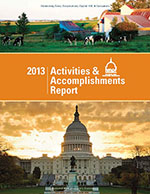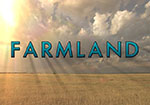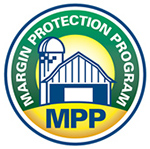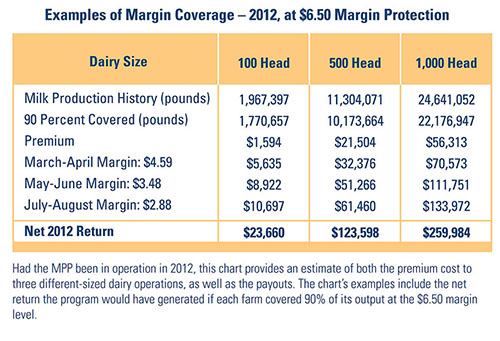Animal Ag Alliance Stakeholders Summit to Focus on Millennials
April 04, 2014The Animal Agriculture Alliance will hold its 13th annual Stakeholders Summit May 8-9 at the Capital View Hotel in Arlington, Virginia. The focus of the meeting will be on marketing to the millennial generation.
The summit will include advice from chefs, retailers, trade media, and marketing experts on reputation management and other topics. A simulation on crisis management will also be included. Panel discussions will cover hot-button issues including sustainability, antibiotics, farm size, and animal care. All sessions will be geared toward marketing to 80 million U.S. millennials.
Additional information on the Summit, including registration information, can be found on the Animal Agriculture Alliance website.
American Butter Institute Annual Meeting to Meet in Chicago
April 04, 2014 The Annual Conference of the American Butter Institute & the American Dairy Products Institute will be held April 27-April 29, 2014, at the Hyatt Regency Chicago.
The Annual Conference of the American Butter Institute & the American Dairy Products Institute will be held April 27-April 29, 2014, at the Hyatt Regency Chicago.
“This meeting is a great opportunity for not only networking and interacting with industry leaders, but it also presents a great venue to meet with customers. The dairy industry’s landscape has changed considerably, not just domestically but internationally, and the sessions presented at the meeting provide attendees insight into how to prepare for these changes,” said David Riemersma, President of Butterball Farms, who also serves as President of ABI.
The conference will feature panel discussions on the dairy industry’s current market conditions; a discussion of the Food Safety Modernization Act (FSMA); a review from across the value chain of GMO use; and a discussion of new rules and regulations from the Commodity Futures Trading Commission that were mandated by the Dodd-Frank reform legislation.
Also, Jerry Kozak, former NMPF President and former ABI Executive Director, will receive the 2014 ADPI Award of Merit on Monday, April 28th.
2013 Activities & Accomplishments Report Highlights NMPF Issues and Actions Last Year
April 04, 2014 Want to know what NMPF did for dairy farmers last year? Check out the latest edition of the Activities & Accomplishments Report, available on the NMPF website. Published annually, the A&A Report gives members a detailed look at the issues and actions NMPF faces each year.
Want to know what NMPF did for dairy farmers last year? Check out the latest edition of the Activities & Accomplishments Report, available on the NMPF website. Published annually, the A&A Report gives members a detailed look at the issues and actions NMPF faces each year.
The 2013 report covers the continued fight for an updated dairy safety net, which culminated early this year with enactment of new margin insurance program in the farm bill. In addition, the report covers NMPF’s work on immigration reform, trade policy, the REAL® Seal, Cooperatives Working Together, and more.
“The year 2013 was pivotal for NMPF,” said NMPF President and CEO Jim Mulhern. “In addition to pursuing the best possible economic future for dairy farmers, NMPF fought daily battles on a variety of important fronts. You’ll learn about all this work in the 2013 Activities & Accomplishments Report. I encourage you to take a look at it.”
New Farming Documentary to Reach Theatres Nationally this Spring
April 04, 2014 A new film that helps connect consumers with both farmers and modern farming practices will be released this spring, thanks to support for the movie generated by the U.S. Farmers and Ranchers Alliance, of which NMPF is a member.
A new film that helps connect consumers with both farmers and modern farming practices will be released this spring, thanks to support for the movie generated by the U.S. Farmers and Ranchers Alliance, of which NMPF is a member.
Academy Award®-winning filmmaker James Moll’s new feature length documentary, Farmland, will be released nationally May 1, and will be distributed in more than 60 major markets. The film will have its East Coast premiere at a private screening on April 17, during the 2014 Tribeca Film Festival.
Farmland offers viewers an intimate and firsthand glimpse into the lives of six young farmers and ranchers across the U.S., chronicling their high-risk/high-reward jobs and their passion for a way of life that has been passed down from generation to generation, yet continues to evolve.
The website www.FarmlandFilm.com will list local theatres where Farmland will be screening.
Would Feta, with Another Name, Sell the Same?
April 04, 2014What’s in a name? Plenty when it comes to parmesan, feta and muenster, and the European Union wants to ban their use by U.S. dairy interests.
In a thinly veiled protectionist gambit, the Europeans argue that American versions of these cheeses aren’t the real thing. They say, for example, parmesan can only come from Parma, Italy, and feta can only come from Greece.
So in mid-March, a majority of the Senate asked the U.S. government to fight back. In a letter to Agriculture Secretary Tom Vilsack and U.S. Trade Representative Michael Froman, the lawmakers said the E.U. cannot be allowed to use a pending free trade agreement to claim cheese names used in this country for decades are “geographic indicators” that only apply to products made in Europe.
The letter, spearheaded by Sens. Chuck Schumer (D-NY) and Pat Toomey (R-PA), urged the U.S. negotiators to reject any proposal in the Trans-Atlantic Trade and Investment Partnership that would “restrict in any way the ability of U.S. producers to use common cheese names.”
NMPF and the U.S. Dairy Export Council applauded the bipartisan letter, which comes at a crucial time in negotiations over the Trans-Atlantic trade agreement.
“Over the past five years, U.S. cheese exports have been growing by an average of 40 percent annually, leading to a record $1.4 billion in sales last year,” said NMPF President and CEO Jim Mulhern. “The United States has become the largest single-country cheese exporter in the world. So it’s vital that unfounded barriers to trade not hinder our growth.”
White House Cites Dairy Sector’s Efforts to Reduce Greenhouse Gases as it Releases Voluntary Methane Program
April 04, 2014More than five years ago the dairy industry, working through Dairy Management Inc.’s Innovation Center for U.S. Dairy, launched an unprecedented effort to measure and reduce the industry’s carbon footprint.
Late in March, the White House formally cited those efforts in announcing its own plan to reduce potent methane gas emissions from a variety of sources. Methane is the largest source of greenhouse gas emissions on dairy farms.
The Obama administration’s Biogas and Energy Roadmap will work with dairy farmers to voluntarily adopt systems that both reduce environmental risks and increase revenues for participants. These include recycling manure into products like fertilizer and energy and recovering nitrogen and phosphorus from soil.
Among other things, the roadmap will give farmers access to resources to reduce environmental risks, increase research into technologies that extract nutrients from food waste and manure, and attract investment to help the dairy industry become more sustainable.
“This announcement validates the dairy industry’s path, which is focused on incentives to increase farm income, rather than punitive regulations that would add more costs,” said NMPF President and Chief Executive Officer Jim Mulhern. “Because of our efforts and dairy farmers’ long-standing environmental stewardship, the White House strategy for agriculture includes cost-effective, voluntary actions to reduce methane emissions.”
In 2009, the dairy industry established a voluntary goal to reduce its carbon footprint by 25 percent by 2020.
NMPF Asks FDA to Rewrite Animal Feed Regulation
April 04, 2014NMPF has asked the Food and Drug Administration to rewrite a draft livestock feed regulation, saying the agency went beyond the intent of Congress by seeking to impose requirements that will not make animal feed safer.
In comments filed with the agency, NMPF asked FDA to substantially revise the regulation and set up a new round of comments from industry and the public. “FDA has the authority to re-propose the regulation and still comply with (a) court-ordered deadline to publish a final rule by August 30, 2015,” NMPF said. The issue has gain visibility on Capitol Hill recently, with the FDA being challenged by industry groups like NMPF, as well as lawmakers. At a Senate hearing Thursday, FDA Commissioner Margaret Hamburg told lawmakers that she is committed to finding a practical solution to the concerns about the continued use distillers grains as animal feed.
The draft regulations were issued under the Food Safety Modernization Act, which gave the FDA broad new authority to regulate food. NMPF supports implementation of the 2010 law, but believes the draft animal feed regulation goes too far, particularly in making it harder to use brewers’ grain as animal feed. This “will result in unnecessary increased costs to dairy producers,” NMPF said.
By-products from brewing have been used in animal feed for hundreds of years and there is no public health risk associated with them. NMPF joined the Beer Institute and the American Malting Barley Association in asking FDA to exempt from regulation animal feed products made during the production of alcoholic beverages.
NMPF also said the draft regulation incorrectly establishes manufacturing standards that equate animal feed and human food. “The innate hygienic standards of humans exceed the hygienic standards of livestock,” it said.
In separate comments submitted jointly with the International Dairy Foods Association, NMPF identified unnecessary and duplicative requirements for dairy processing plants which may divert some food production materials such as cheese trim and liquid whey to animal feed. These plants are already subject to FSMA requirements for human food production.
NMPF and IDFA Join Forces to Oppose Congressional ‘Milk Freedom Act’
April 04, 2014Raw milk, until now mostly an issue in state legislatures, has migrated to Congress, where freshman Rep. Thomas Massie (R-KY) has introduced the “Interstate Milk Freedom Act” to repeal the long-standing ban on selling unpasteurized milk across state lines.
In a March 25 letter, NMPF and the International Dairy Food Association joined forces to oppose the legislation, arguing it would greatly increase the production and consumption of a known health hazard. “Raw milk skips the pasteurization safety process, and this is playing Russian roulette with the health of too many Americans – including many of our children,” the letter said.
Federal law gives states the discretion to regulate unpasteurized milk within their borders. Thirty states, many lobbied by a small but vocal band of advocates, now allow some form of raw milk purchases. In 12 states, consumers can purchase raw milk at retail stores; in most others sales are limited to farms, farmers’ markets and “cow-share” programs under which consumers become part owners of a dairy cow.
NMPF President and CEO Jim Mulhern said, if the Massie bill passes, children will be the ones who suffer the most. “The benefits of consuming raw milk are illusory, but the painful costs of illness and death are very real,” he said.
The Centers for Disease Control says that only one to two percent of reported foodborne illness outbreaks are attributed to dairy products but that, among those, more than 70 percent are associated with raw milk and inappropriately‐aged raw milk cheeses.
CWT Assists Members in Selling 31.9 Million Pounds of Product
April 04, 2014For Cooperatives Working Together (CWT), March came in like a lamb but went out like a lion, assisting members during just the last week of the month in selling seven million pounds of cheese, nearly 14 million pounds of 82 percent butter, and just under a half a million pounds of whole milk powder. These assisted sales raised the totals for the month of March to 10.3 million pounds of cheese, 19 million pounds of butter, and 2.7 million pounds of whole milk powder.
For the first three months of 2014, CWT has assisted member cooperatives in selling 36.3 million pounds of Cheddar, Gouda and Monterey Jack cheese, 29.4 million pounds of butter, and 3.4 million pounds of whole milk powder. The product is going to 27 countries on five continents.
The milk equivalent of these sales on a milkfat basis is equal to 997.8 billion pounds of milk. That is more than double the increase in U.S. milk production for the first two months of 2014, and is equal to the annual production of 47,500 cows.
Revised Dairy Safety Net Presents a New World for Farmers
April 04, 2014 It may not match Columbus’s discovery of America, but when a revised federal safety net kicks in after September 1, it will definitely be a New World for dairy farmers. And the same question is on virtually every farmer’s mind: what will this mean for me?
It may not match Columbus’s discovery of America, but when a revised federal safety net kicks in after September 1, it will definitely be a New World for dairy farmers. And the same question is on virtually every farmer’s mind: what will this mean for me?
Many of the details remain to be worked out. But here’s what we know now, starting with the basics.
The new program, called the Dairy Producer Margin Protection Program, is a voluntary risk management program that will help prevent the kind of catastrophic equity losses that hit dairy farmers in the 2008-2009 recession and again in 2012. It will address fluctuations in margins caused by both low milk prices and high feed costs.
The Margin Protection Program replaces price supports, MILC payments and other, less effective federal programs for dairy. It was enacted as part of the 2014 farm bill and was the product of five years of work by the National Milk Producers Federation and numerous dairy cooperatives and organizations across the country.
How MPP Will Work
All dairy farms will be eligible to participate. Two or more producers involved with a single operation will be treated as a single farm. Multiple farms operated by a single producer will register separately. Sign-ups will be at the local USDA Farm Service Agency (FSA) office.
Producers will be able to insure their margins on a sliding scale, both for how much milk production is covered and for the specific margin level selected. Basic coverage, starting at $4 per hundredweight, will be paid by the government. Above $4, premiums will be shared between the farmer and the Agriculture Department. The program will pay out benefits to all producers equally, regardless of size.
The program will pay producers when national average margins for periods of two consecutive months (Jan.-Feb., Mar.-April, and so on) fall below the coverage level chosen by the producer. During such periods, it will pay on one-sixth of a farm’s annual production history, multiplied by the percentage of production selected by the producer.

Margins are defined as the all-milk price minus national average feed costs. Feed costs will reflect the cost of feeding all animals on a farm, including heifers and dry cows. Initially, a farm’s production history will be the highest annual production among the last three years. After the first year, a farm’s production history will increase, based on the average growth in milk production nationally. Any milk production growth on a farm beyond the national average will not be covered.
Producers will choose to insure from 25 percent to 90 percent of production history, in five percent increments. Margin coverage will be in 50-cent increments, from $4 per cwt. to $8 per cwt. Premiums will be fixed for five years but will be discounted by 25 percent in 2014 and 2015 for volumes up to 4 million pounds. There will also be an annual administrative fee of $100 to enroll.
Donation Program
The farm bill also created a Dairy Product Donation Program that will be triggered when margins are extremely low. If margins fall below $4 per cwt. for any two consecutive months, the Agriculture Department will purchase consumer-ready dairy products for donation to food banks and other low-income feeding programs. Purchases will continue for three months, or until margins rebound above $4.
USDA cannot store the dairy products and organizations receiving products cannot sell them in commercial markets.
What Happens Next?
USDA’s Farm Service Agency is just beginning the process of setting up the Margin Protection Program. This will take much of 2014. The National Milk Producers Federation is working with FSA to ensure the program is effective and farmer-friendly. But at this point there are lots of unknowns, including:
- When will coverage start and when will sign-up begin?
- Can farmers insure different portions of their production at different levels?
- How will new entrants be handled, as well as those selling or leasing operations?
NMPF will be working with the Agriculture Department to answer these and other questions as the rules for the new program are written. NMPF’s Future for Dairy website is being refashioned into a hub for information on the program and its implementation. Check www.futurefordairy.com for updates.





